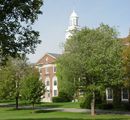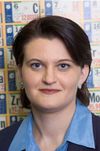Oxidative stress and antioxidants: diagnosis and therapy
The goal of this symposium is to provide a forum for scientific and technical exchanges of the recent advances in the diagnosis and treatment of oxidative stress with implications in human health. The section will bring together scientists from different fields (chemistry, biochemistry, biology, materials science) to discuss the latest developments, challenges and opportunities in this exciting area of research. Novel therapeutic approaches for the treatment of oxidative stress diseases as well as strategies for measuring oxidative damage (DNA damage, release of reactive oxygen species, etc) in vivo and in vitro will be discussed. The symposium will also include presentations on mechanistic studies of natural antioxidants and investigations of new materials possessing interesting antioxidant/free radical scavenging properties as therapeutic agents in the treatment of medical diseases related to reactive oxygen species, such as spinal cord injury, stroke and neurological disorders. Topics of particular interest include (but are not limited to):
- Biological mechanisms in oxidative stress related diseases
- Genotoxicity and cytotoxicity
- Evaluation of antioxidant activity, oxidative damage and reactive oxygen species
- Therapeutic approaches involving antioxidants
- Novel antioxidants and their mechanism of action
- Nanoparticle-induced oxidative stress
- The role of antioxidants in human health
Session organizer
Dr. Silvana Andreescu is Assistant Professor in the Department of Chemistry and Biomolecular Science at Clarkson University. Dr. Andreescu's research interests include investigations of biomimetic materials with antioxidant properties for diagnosis and therapeutic applications in biomedicine, and development of practical biosensors for environmental and clinical monitoring. Other interests include in vivo toxicity studies of engineered nanomaterials and development of electrochemical probes for in vivo measurements of neurological activity, nanoparticle-induced toxicity and oxidative stress.
Confirmed speakers
- Prof. James F. Rusling, Professor of Chemistry and Cell Biology, University of Connecticut.
- Prof. Omowunmi A. Sadik, Professor, Department of Chemistry, State University of New York at Binghamton, Binghamton, NY.
- Prof. Ana Estevez, Professor, Department of Biology, St. Lawrence University, Canton, NY.
- Prof. Artem Melman, Professor, Department of Chemistry and Biomolecular Science, Clarkson University, Potsdam, NY.
- Prof. Maria R. Hepel, Professor, SUNY Potsdam, NY: "DNA unwinding and oxidative damage caused by toxicants."
- Prof. Costel Darie, Professor, Department of Chemistry and Biomolecular Science, Clarkson University, Potsdam, NY.
- Dr. Irina Perdivara, National Institutes of Environmental Health Science, Research Triangle Park, NC 27709.

|
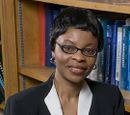
|

|
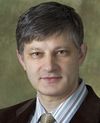
|
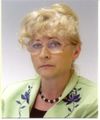
|

|

|
| Dr. Rusling | Dr. Sadik | Dr. Estevez | Dr. Melman | Dr. Hepel | Dr. Darie | Dr. Perdivera |
Program
Thursday, June 3, 8:30 AM - 11:15 AM
- Oxidative Stress and Antioxidants
- Diagnosis and Therapy
- Kellas 101
Organizer/Presider: Emanuela Andreescu
8:30 142 Electrochemiluminescence Arrays for Toxicity and Oxidative Stress Screening. James Rusling1, Sadogopan Krishnan1, Linlin Zhao1, Dharamainder Choudhary2 and John Schenkman2, (1)University of Connecticut, (2)University of Connecticut
9:00 143 DNA Unwinding and Oxidative Damage Caused by Toxicants. Maria Hepel and Magdalena Stobiecka, State University of New York at Potsdam
9:20 144 Comparative Analysis of Quercetin Oxidation by Electrochemical, Enzymatic, Autooxidation and Free Radical Generation Techniques. Wunmi Sadik and Ailing Sadik, SUNY-Binghamton
9:40 Intermission
9:55 145 Antioxidant Effects of Cerium Oxide Nanoparticles in an In-Vitro Mouse Hippocampal Brain Slice Model of Ischemia. Ana Y. Estevez1,2, Praveen Chatani1, Johanna Ludington1, Abigail Lynch1, William P. Mosenthal1, James C. Leiter4, E. Silvana Andreescu3 and Joseph S. Erlichman1, (1)St. Lawrence University, (2)St. Lawrence University, (3)Clarkson University, (4)Dartmouth Medical School
10:15 146 Iron Chelation and Oxidative Stress: A Controversial Relationship. Artem Melman1, Fadi Bou-Abdallah2 and Xing Xing Liu1, (1)Clarkson University, (2)State University of New York at Potsdam
10:35 147 Analysis of Transient Protein-Protein Interactions within EphB2-Dependent Signaling. Christopher Talbot, Izabela Sokolowska, Supriya Mathur, Jonathan Samson, Melissa Butkiewicz, Rama Yakubu and Costel C. Darie, Clarkson University
10:55 148 Immunoaffinity-Mass Spectrometry Approach for Identification of N-Formyl Kynurenine in Proteins. Irina Perdivara1, Marilyn Ehrenshaft2, Ronald P. Mason2 and Kenneth B. Tomer1, (1)NIEHS/NIH, (2)NIEHS/NIH
